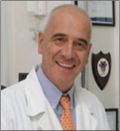Translate this page into:
Editorial commentary: Bio-orthopedics

-
Received: ,
Accepted: ,
How to cite this article: Gobbi A, Dallo I. Editorial commentary: Bioorthopedics. J Arthrosc Surg Sports Med 2021;2(1):4-5.
Nowadays, there is a growing interest in using biologic treatments that incorporate tissue engineering strategies: Cells, scaffolds, and signaling molecules. In the past, clinical approaches have involved mechanical and structural solutions to musculoskeletal problems. The term bio-orthopedic includes all the biological treatment options for different orthopedic conditions.[1] It is now a key component in the practice of modern orthopedics, arthroscopy, and sports medicine.
Today, commonly used biological approaches include platelet-rich plasma (PRP), bone marrow aspirate concentrate (BMAC), and autologous microfragmented adipose tissue. These treatments may contribute to a regenerative microenvironment with the potential to improve healing and function in patients with musculoskeletal problems. The American Academy of Orthopaedic Surgeons defined these biological as substances that can be found naturally in the body that aids in injury healing.[2] In this new era of bio-orthopedics, the host repairs/regenerates the damaged tissue using the intrinsic capability, utilizing not only hammers, nails, and screws as part of the orthopedic approach.
This new field of medicine is changing the face of orthopedics. The knowledge of cellular biology, genetics, and tissue engineering, along with the clinical translation of this new understanding, will likely continue to evolve.
The application of biological therapies has the potential to facilitate the healing mechanism of tissues with limited healing potential and vascularity such as tendons, cartilage, meniscus, and ligaments. However, to better understand and advance bio-orthopedics, it is essential to know the potential and limitations of the different components in tissue engineering approaches. The term “stem cell” has been overused based on the consensus of the expert’s opinion.[3] Therefore, it is recommended that the use of minimally manipulated cell products and tissue-derived culture-expanded cells be referred to as “cell therapy” to allow a better representation of the nature of these treatments. Basic science research has provided proof of the concept that some cell therapy approaches (e.g., bone marrow-derived mesenchymal stem cells MSCs) may downregulate inflammation and produce an analgesic effect. As such, there is a continued need for high-quality basic science and clinical investigation into the safety and efficacy of biological therapies, including cell-based therapies. It is recommended that physicians and institutions offering biologic therapies establish patient registries for surveillance and quality assessments.
In our experience, based on the quantification of colony-forming units (CFUs) in 25 patients, we did not find any correlation between the clinical outcomes and the number of CFUs. An intriguing explanation for these results may come from the new vision of MSC recently proposed by Caplan as “Medicinal Signaling Cells.” According to this concept, MSCs, rather than participating in tissue formation, work as site-regulated “drugstores” in vivo by releasing trophic and immunomodulatory factors activated by local injury. These paracrine capabilities bring into focus the modern view of bio-orthopedics.
A recent study from our clinic concluded that primary ACL repair combined PRP and BMAC to treat select cases of knee instability secondary to incomplete ACL rupture demonstrated good long-term outcomes in athletes, with high rates of restoration of knee stability and returned to pre-injury athletic activities.[4]
In the rotator cuff repair setting, there are few studies using bone marrow cells (BMACs) to augment the healing rate. One case–control study using BMAC sourced from posterior iliac crest showed significant improvement in healing outcomes and a reduced number of retears determined by ultrasound and MRI at 10 years follow-up.[5]
We conclude in a prospective study that the repair of full-thickness cartilage injury in the knee with an HA-BMAC provides good to excellent clinical outcomes at long-term follow-up in the treatment of small to large lesions, single or multiple lesions, and lesions in 1 or 2 compartments, as well as in cases of associated lesion treatment.[6] While good outcomes can be expected among patients more than 45 years of age, results may be comparatively more successful in younger patients.
Adipose-derived stromal cell therapy, also known as an adipose stromal vascular fraction (ASC), has gained recent popularity as a minimally manipulated product. Adipose tissue, which is typically structured with consistent vascularity, has been increasingly recognized as a reliable source of these cells. An RCT demonstrated a significant reduction in Western Ontario and McMaster Universities Osteoarthritis Index, improved Lysholm score, and significant pain reduction (VAS), for the treatment of mild-to-moderate knee osteoarthritis compared to hyaluronic acid.[7] We believe that bio-orthopedics created unique opportunities to address pathological situations with unsatisfactory results and will be in the near future the new standard of care in orthopedics.
References
- Optimizing clinical use of biologics in orthopaedic surgery: Consensus recommendations from the 2018 AAOS/ NIH U-13 conference. J Am Acad Orthop Surg. 2019;27:e50-63.
- [CrossRef] [PubMed] [Google Scholar]
- Long-term outcomes of primary repair of the anterior cruciate ligament combined with biologic healing augmentation to treat incomplete tears. Am J Sports Med. 2018;46:3368-77.
- [CrossRef] [PubMed] [Google Scholar]
- Biologic augmentation of rotator cuff repair with mesenchymal stem cells during arthroscopy improves healing and prevents further tears: A case-controlled study. Int Orthop. 2014;38:1811-8.
- [CrossRef] [PubMed] [Google Scholar]
- Long-term clinical outcomes of one-stage cartilage repair in the knee with hyaluronic acid-based scaffold embedded with mesenchymal stem cells sourced from bone marrow aspirate concentrate. Am J Sports Med. 2019;47:1621-8.
- [CrossRef] [PubMed] [Google Scholar]
- A randomized, controlled study to evaluate the efficacy of intra-articular, autologous adipose tissue injections for the treatment of mild-to-moderate knee osteoarthritis compared to hyaluronic acid: A study protocol. BMC Musculoskelet Disord. 2018;19:383.
- [CrossRef] [PubMed] [Google Scholar]






